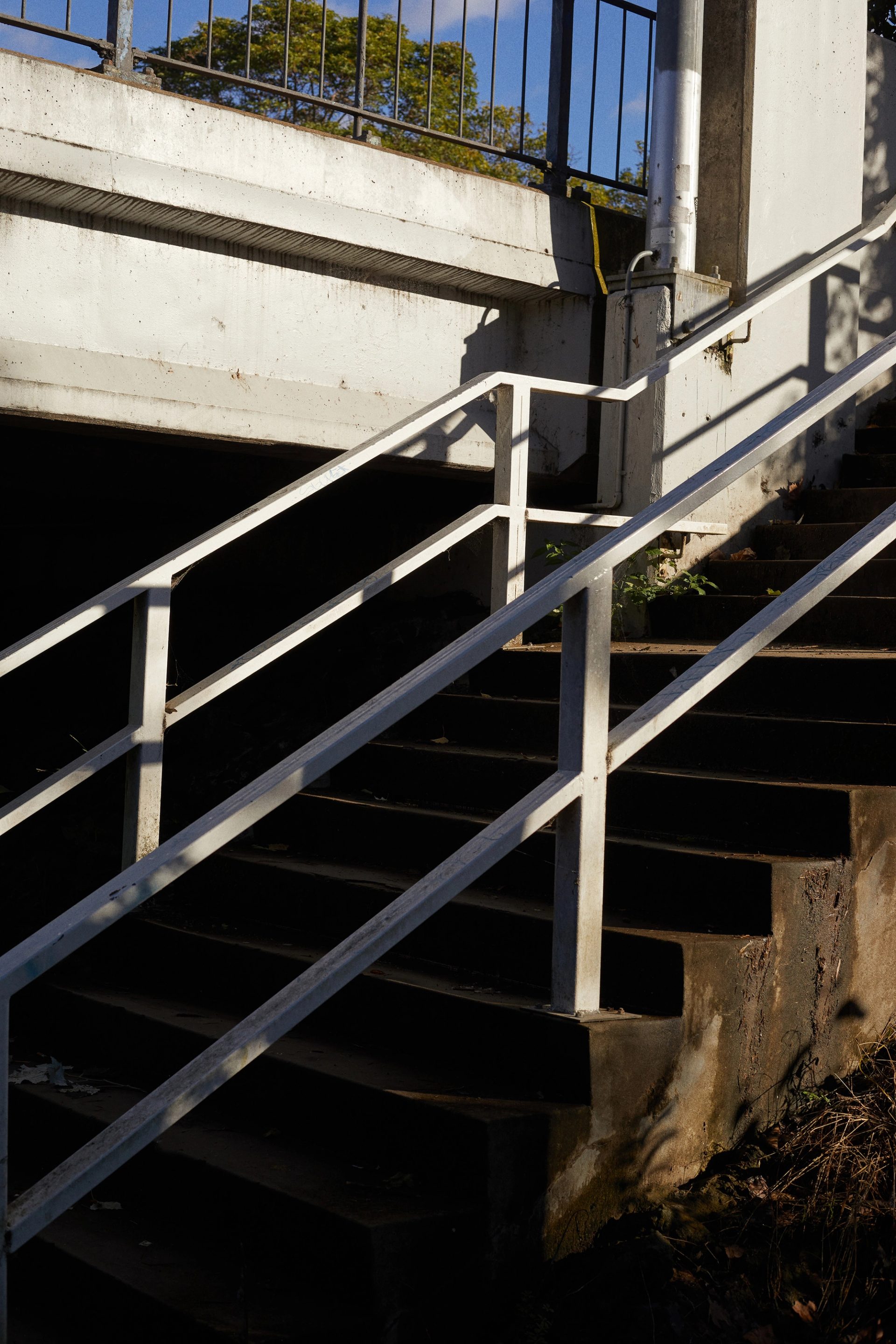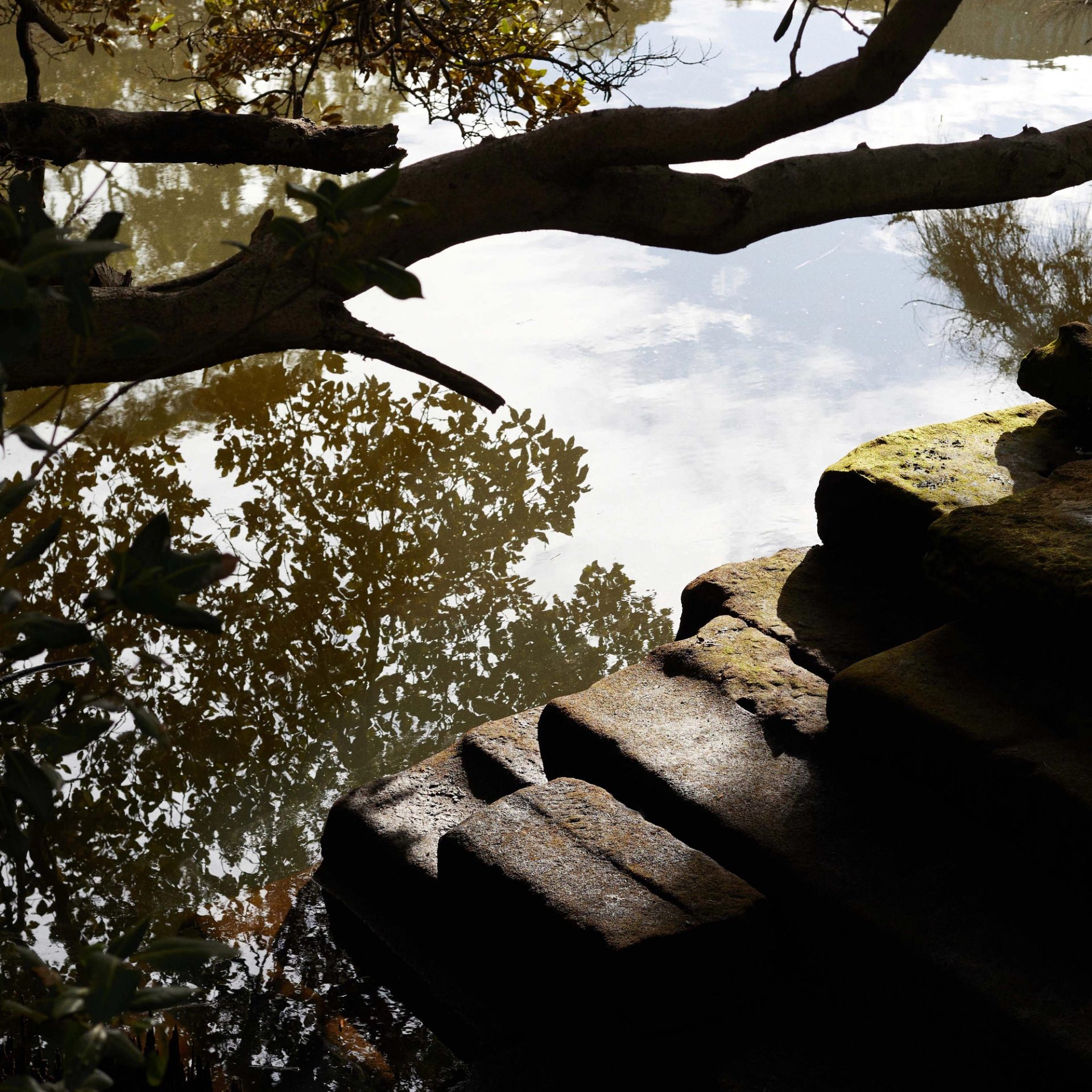Flow State

Lachlan Brown was commissioned by Powerhouse to write this poem for The River, a series of new writing and photography responding to the landscape, communities and histories surrounding the Parramatta River.
Flow State
Savvy paraclete brooding over the turns,
always flowing in fits & starts, work-
sited daylight with glistening buildings,
punctuated by verities (heritage, merit,
greenspace as concession or after-
thought): a river may recede without
being ceded; its beginning forever el-
-usive. The shopping trolleys haul stories
down Toongabbie Creek, channelling geo-
-logical time, another weir-ed waterway
shadows the point of confluence where eels
slip into or out of existence. Taking to the track,
you run through parklands, flanked by banks
& sandstone. There’s so much that will prop-
up the world. The bridges grip the span
of river. The metallic boardwalks grid
the wetlands so you’re floating above
grasses then mangroves. In the west
red gums will release a harvest
of flying foxes at the appointed time;
they’ll stream across the draped sari
of sky, calling on life to repeat its effort-
-less miracle & when they leap up from
the mind’s poem, spilling over the stadium’s
rim, you crash down a set of stairs. Your
injuries capture the moment: graze
of horizon, bloodred sky, silent kindred
in wheeling displays. Though back (forward)
on (to) another morning, wisps of fog gather
in fields with their unspoken hunger. Francis
Webb described the ‘sad frescos’
of sky & print from within ward two
nearby. Each institution has its
own ghosts: Parramatta Psychiatric
Centre, the Female Factory, Marsden’s
seminary for the sons of Maori chiefs
(13 lost, small graves perched over the bend).
The river is dotted with these legacies
& the past is clogged with bodies: rest-
less Frank hearing calls of children, while
the ferry’s wide turn wipes a surface clean.
Then at Rydalmere, past the convent/ factory
small rebellions accrue: litter shifting in the wind,
the eyes of a pensioner with illicit fishing rod
in hand, a dog shit smeared across the path. It’s all
art isn’t it? At least, that’s what’s available via con-
traction, via image, via… Is this dense inflection
enough? Have we reached the part where citizens
understand the omnidirections of development?
Rubbish dumps transubstantiate into fields;
creeks line themselves with concrete floors
& what still runs through this city’s heart,
through each of us, in culpable ripples? Eager
phthalates remain forever present, too
small to always register, stubborn by-
products of PVC production. The fact-
ories cut into history, depositing poly-
chlorinated dibenzodioxins that will
persist & twist the waterway, a garden
hose writhing over a small patch of lawn.
The histories cut into factories with deposit-
ions written in coal dust, remnants of the gas-
works that powered progress. Perhaps what
returns is a double negative, the opposite foot
dipped into an anti-Ganges, cleansed or
polluted, restored or re-stored in the 21stC.
Sometimes when you run there is no-one else
& so the view is worth evenmore or evenless. Re-
valued this way, the water senses its possible
escape, pushing east into salt & privilege.
The sun rises from this direction, a rote blessing
reciting itself through trees, around the high-rise,
skimming light across concrete barriers. The warmth
& light always feel belated (an infinitesimal diff-
erence but nursed into resentment with tidal
force): economic distance, a cultural delay,
the ferry running behind schedule, King’s
schoolboys carving through the river with grace:
this is where the jetties become private prop-
-erty & the path cuts out or heads north.
‘Where I am going you cannot follow…’
But when you’ve come this far the kilometres
are their own burden, weighing down your body,
& you’ve picked your way around many
points, debating what might matter when
the houses outprice themselves. No glades
near Gladesville, just scrub, hints of convict
roads, Bedlam Point where in 1847
the ferryman was found ‘dead drunk…
within less than his own length of the water’s
edge.’ Narrowest section apparently,
the pinched nerve of dispossession,
De mortuis nil nisi bonum
etched by convicts nearby. That’s
a colony’s unseen message, the long
obbligato of what we’ve inherited.
Looking up you harbour new views
swapping the faith of industry
for the faith of real-estate. Sails
shimmer as the wind skims across
surfaces & the world opens out
to the eternal present. What finds you
at this point of inflexion? A breath not
from yourself, a preset metanoia arriving
unbidden, making you finally turn for home.
First Nations languages are part of oral traditions that have existed for millennia and do not directly translate into the Roman alphabet, as used in English. Therefore, First Nations languages’ sounds have been interpreted in many different spellings. This means that the same words, including language groups and place names may be spelled in two or three different ways. For this publication, we have privileged the spellings of First Nations words the way the authors have suggested unless advised otherwise by Traditional Owners.
Writer
Lachlan Brown grew up in Macquarie Fields in South West Sydney. He has published two collections with Giramondo: Limited Cities and Lunar Inheritance. In 2021 he won the Newcastle Poetry Prize and he’s also been awarded the Sydney University Henry Lawson Prize for Prose, the Macquarie Fields Poetry Prize and the Hermes best poem award. He is currently a Senior Lecturer at Charles Sturt University.
The River

The River is a collection of new Australian writing and photography responding to the landscape, communities and histories surrounding the Parramatta River. Featuring Lachlan Brown, Willem Brussen, Felicity Castagna, Anwen Crawford, Maarama Kāmira, Joseph Mayers, Fiona Murphy, Conor O’Brien, Jiva Parthipan and Vivian Pham.
Writer: Lachlan Brown
Commissioning Editor: Lachlan Brown
Head of Writing, Powerhouse: Jemma Birrell
First Nations Cultural Advisors: Beau James, Nathan Mudyi Sentance
Senior Editor, Powerhouse: Katrina O’Brien
Photos by: Conor O’Brien



























